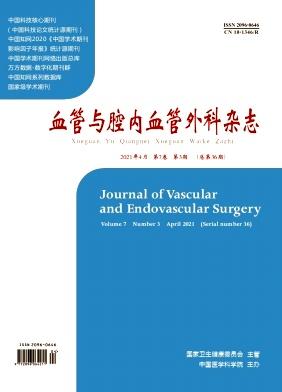Endovascular repair of ruptured abdominal aortic aneurysms: logistics and short-term results.
引用次数: 95
Abstract
PURPOSE To report our experience in establishing a treatment protocol for endovascular aneurysm repair (EVAR) of ruptured abdominal aortic aneurysms (rAAA), including an investigation of the reasons for patient exclusion and a report of our short-term results. METHODS Between 1997 and July 2002, 21 patients with rAAA underwent endovascular repair according to our protocol and were followed prospectively. A retrospective analysis was also conducted of 23 rAAA patients treated with open repair from January 2001 through June 2002. Procedural and clinical data from this sample were compared to 14 contemporaneous emergent EVAR cases and analyzed to determine why the open repair patients were not treated with an endovascular approach. RESULTS Among the 21 patients treated with emergent EVAR since the beginning of this protocol, 6 (29%) procedures were performed under local anesthesia and 6 were performed percutaneously. Thirty-day mortality was 19%. In the comparison of 14 emergent EVAR cases to 23 open rAAA repairs, the mean duration of symptoms prior to intervention was 12 hours for the EVAR patients and <1 hour for OR patients. No significant difference was found in operating time, but the EVAR group had significantly less blood loss (p=0.0001) and transfusion needs (p=0.02); duration of intensive care unit stay was significantly shorter in the EVAR group (p=0.02). Thirty-day mortality was 29% (4/14) for EVAR and 35% for OR (8/23) (p>0.05). Reasons for not performing EVAR were unavailability of adequate equipment (n=11) or trained staff (n=7), hemodynamically unstable patient (n=2), mycotic aneurysm (n=2), and unfavorable anatomy in a 60-year old patient with a <5-mm-long, sharply angled infrarenal neck. CONCLUSIONS Endovascular repair of ruptured aortic aneurysms is feasible, and short-term results are promising. Good logistics, adequate training of physicians and staff in an elective setting, and versatile endografts are prerequisites for this type of treatment program.腹主动脉瘤破裂的血管内修复:后勤和短期结果。
目的报告我们建立腹主动脉瘤破裂(rAAA)的血管内动脉瘤修复(EVAR)治疗方案的经验,包括对患者排除的原因的调查和我们的短期结果报告。方法对1997年至2002年7月间21例rAAA患者行血管内修复术,并进行前瞻性随访。对2001年1月至2002年6月间接受开放式修复治疗的23例rAAA患者进行回顾性分析。将该样本的手术和临床数据与同期14例急诊EVAR病例进行比较,并分析开放式修复患者不采用血管内入路治疗的原因。结果自该方案开始以来,21例急诊EVAR患者中,6例(29%)手术在局麻下进行,6例经皮穿刺。30天死亡率为19%。在14例急诊EVAR病例与23例开放式rAAA修复的比较中,EVAR患者干预前的平均症状持续时间为12小时(0.05)。未行EVAR的原因是缺乏足够的设备(n=11)或训练有素的工作人员(n=7),患者血流动力学不稳定(n=2),真菌性动脉瘤(n=2),以及60岁患者肾下颈< 5mm长,尖锐角度的解剖结构不利。结论血管内修复动脉瘤破裂是可行的,短期效果良好。良好的后勤保障,医生和工作人员的充分培训,以及多用途的内移植物是这种治疗方案的先决条件。
本文章由计算机程序翻译,如有差异,请以英文原文为准。
求助全文
约1分钟内获得全文
求助全文

 求助内容:
求助内容: 应助结果提醒方式:
应助结果提醒方式:


